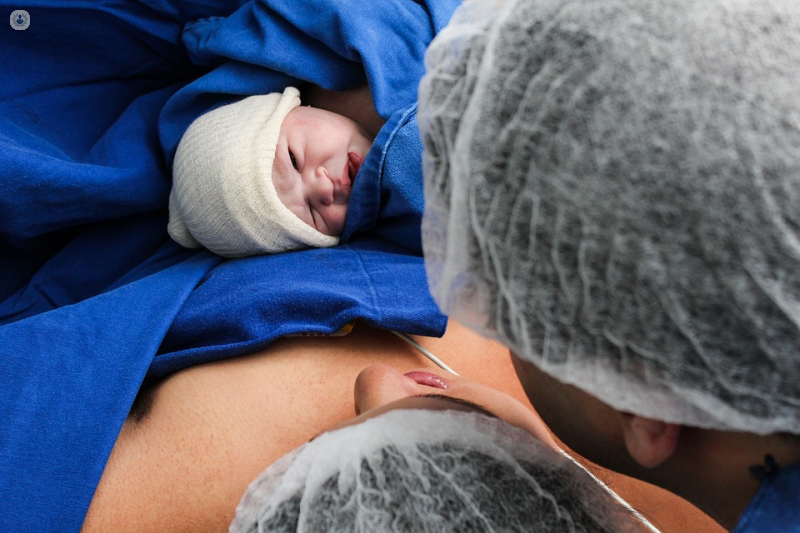Foetal surgery
Dr Marina Fernando - Obstetrics & gynaecology
Created on: 03-14-2017
Updated on: 01-19-2024
Edited by: Aoife Maguire
What is foetal surgery?
Foetal surgery is a surgical procedure performed on a foetus while it is in the womb of the mother. It is rare; only 1 in 1,000 pregnancies require this type of operation. It is a growing area of medicine that can save the life of a baby who has a malformation or disease.

Why is it done?
In the past, foetal surgery was done only in cases where the foetus had a condition that posed a risk to its life. This included:
- Tumours that could affect the heart and cardiovascular system
- Sacrococcygeal teratoma, a tumour that develops in the base of the tailbone
- Congenital diaphragmatic hernia that occurs in the diaphragm causes problems in the lungs
- Twin-to-twin transfusion syndrome where one of the twins doesn’t receive enough blood from the shared placenta
- Obstruction of the urinary tract
However, foetal surgery is now used to treat several conditions that don’t pose a risk to life. After an increasing amount of research and comparisons between children that were operated on before birth and those who were operated on after, it was found that for some children receiving surgery before birth drastically reduced their chances of physical or mental defects and increased their quality of life.
An example of this is in cases of Spina bifida in which the spinal column does not close completely, causing the spinal cord and fluid to spill out. Without treatment, this condition can lead to lifelong paralysis and spinal problems.
What does the surgery involve?
There are currently three types of foetal surgery:
- Open foetal surgery — during surgery, the mother’s abdomen and the womb is cut open to access the foetus. This technique carries a risk to both mother and child, so less invasive methods are usually preferred.
- Fetoscopic surgery — a much less invasive type of surgery which involves inserting a fibre optic endoscope into the uterus and then using a series of special tools, a surgeon can operate on the foetus. This can be done either under local or general anaesthesia.
- The Ex Utero Intrapartum Treatment Procedure (EXIT procedure) — the surgery involves carries out a caesarean, but ensuring the foetus remains joined to the umbilical cord and the placenta.
Are there any risks?
As with any type of surgery, foetal surgery carries risks to both the mother and child that can include infections, excessive bleeding and possible adverse reactions to anaesthesia. Your doctor will discuss with you all the possible risks before recommending surgery and you will always have the opportunity to change your mind at any stage.
